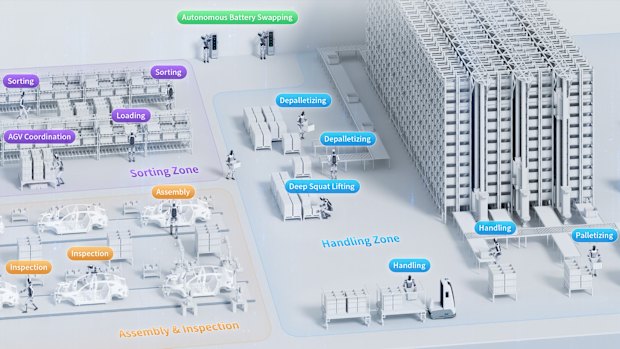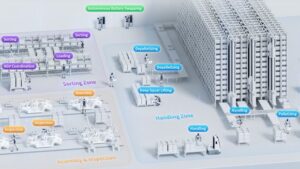
China’s UBTech has announced the first mass shipments of its humanoid robots, specifically the Walker S2 units, to customers. In a video released this week, the robots were seen marching in formation, impressively packing themselves into delivery trucks. This marks a significant milestone, as rival companies like Tesla and Figure have yet to achieve similar mass production and shipment.
While the video has garnered a mix of admiration and concern among viewers, it has also raised a number of questions. The spectacle of synchronized marching appears impressive, but critics wonder if this feature is practical for work environments. Observers are questioning the robots’ balance and stability, leading to inquiries about their actual capabilities in real-world tasks.
Capabilities and Limitations of the Walker S2
The Walker S2 robots are marketed as autonomous factory personnel, boasting features like dextrous hands, a rotating waist, and the ability to change their own batteries. Promotional materials illustrate the robots performing tasks such as lifting heavy boxes and sorting components. UBTech claims to have received multiple orders from various sectors in China, including a data-collection center, a large enterprise, and a government-supported car manufacturer. The firm plans to deliver a total of 500 units by the end of 2025.
Despite these claims, skepticism persists regarding the actual working capabilities of these robots. Observers point out that flashy promotional videos may not accurately represent the robots’ performance in typical factory settings. The design of a bipedal robot, characterized by long limbs and a top-heavy structure, raises concerns about its practicality for industrial tasks.
Market Impact and Future Prospects
UBTech’s stock has surged over 150% this year, reflecting investor enthusiasm for the prospects of humanoid robotics. Yet, the market remains cautious. Many experts question how effectively humanoid robots can integrate into existing workflows, particularly when traditional automation solutions, such as conveyor belts and robotic arms, may offer more efficient alternatives.
The announcement implies that the Walker S2 robots are ready for deployment in professional environments, but their actual performance remains largely unproven. Questions linger about the real-world applications of these robots and the specific industries that are ordering them.
As interest in humanoid robots grows, it becomes increasingly important to evaluate their viability as workforce replacements. The true test will be whether these robots can deliver on their promises, moving beyond the spectacle of synchronized marching to being effective contributors in industrial settings.







